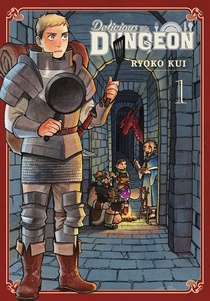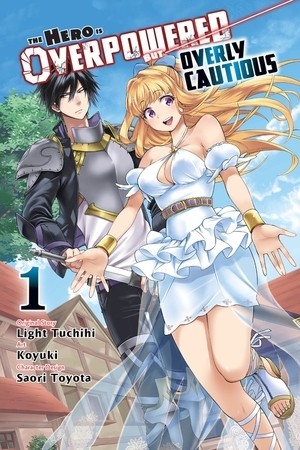You think you know DnD? Wrong. It means Delicious iN Dungeon, a title that no doubt was created to repurpose the acronym of a classic murderhobo role-playing game. Ryoko Kui’s adventure comedy manga concerns Laios, Marcille, Chilchuck, and Senshi’s dungeon descent to rescue Laios’s sister, Falin. Not that Falin is alive; she’s been eaten by a dragon, and is being slowly digested into dragon dung. Remember, this is a parody of murderhobo RPGs, in which characters are easily resuscitated through resurrection spells or wishes. Nonetheless, as they must extract Falin’s corpse from the dragon’s guts, they are in a race against time. As Laios puts it in two panels that will have veteran tabletop gamers tittering, “My little sister’s going to be digested while we’re getting ready. People have been resurrected from mincemeat before, right!? Has any adventurer ever been revived from poop!?” If you have an appreciation for the set of D&D in-jokes best expressed by this quotation, then Delicious in Dungeon might be your cup of tea.
If dragon poop jokes are not your idea of comedy gold, I should tell you that Delicious in Dungeon has a wide-ranging tone, and Ryoko Kui’s premise is pretty novel: take a generic tabletop RPG backdrop, treat it as a ready-made playset not unlike an old school D&D module, and breathe life into the tired tropes and archetypes of RPGs by having the characters tackle authentic RPG problems in new ways. However, while it breaks the formula of the tabletop RPG in these scenarios, it also venerates the concept of them, and veteran DMs may get some ideas for their campaigns from reading Delicious in Dungeon.
Because while much of Delicious in Dungeon reads like an alternating bestiary and cookbook, it doesn’t merely hammer on this basic premise of eating monsters; it’s actually a pretty tightly woven package of RPG ideas. There is not only a dungeon ecosystem (a food pyramid which our heroes want to climb to the top), but a dungeon economy, as other adventurers and merchants have set up pop-up villages as waypoints on levels that have been more or less cleared. Not that there aren’t a lot of cool tricks in DnD‘s bestiary; in “Living Armor” (137-184), Laios and his group discover that the empty suits of armor that roam the dungeon aren’t magically animated, as you would expect, but are moved by colonies of mollusk-like creatures that live in the gaps between the armor plates.
Ryoko Kui’s strength in the first volume is his ability to move deftly between the genres of cooking manga and adventure manga (specifically fantasy and monster hunting subgenres) so that the reader accepts fantasy archetypes that periodically become cooking show hosts to provide exposition on the preparation of monsters. However, because the recipes are absurd and imprecise, the confection that results is one in which the substance of the pastry is predominantly the fantasy genre; to break it down by layer, the fantasy is the cake, the monsters are the icing, and the cooking show is just the inedible topper. And if you don’t try to eat the topper, my guess is that you’ll be back for Delicious in Dungeon Volume 2. As a long time reader of both fantasy novels and manga, I can tell you that I enjoyed the first volume, though it owes more of a debt to comedic fantasy like Another Fine Myth than to cooking manga like Food Wars.
Delicious in Dungeon Volume 1 arrives on shelves on May 23rd, 2017, and can still be prordered through this list of online booksellers on the Yen Press page.

Yen Press sent the review copy.



Comments are closed.